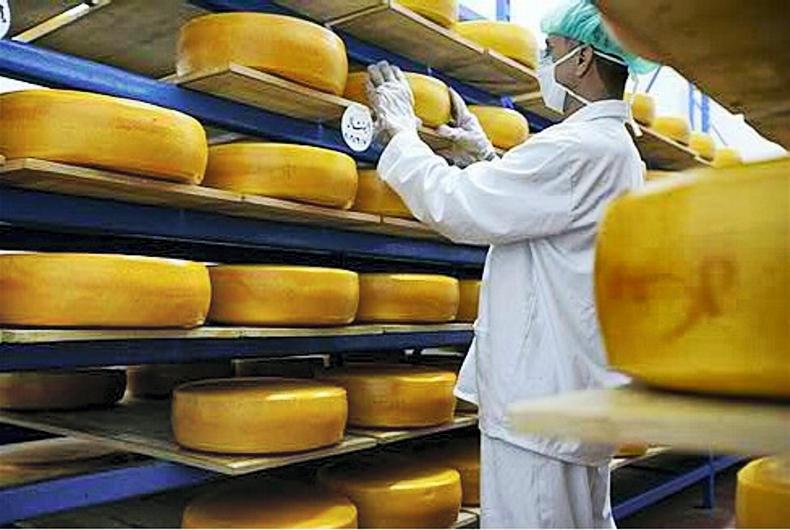Since the ending of milk quotas in 2015, Europe has consistently set the tone in global dairy markets, principally in terms of milk supply. The unshackling of Europe’s dairy industry from the quota system has allowed farmers to expand but it has also made European milk production far less predictable.
At the start of 2018, the outlook for milk prices was bleak as European farmers looked set to pump out a wall of milk in the first half of the year. However, a prolonged winter well into April followed by a severe drought across the continent hit European milk production during the peak months and boosted milk prices.
As we move into the final weeks of 2018, milk supply continues to set the tone in terms of dairy market sentiment for the early months of 2019.
Supply
On the supply side, the picture continues to evolve. In New Zealand, dairy farmers have made a strong start to the 2018/19 milking season with milk production for the first four months of the season (June-September) up 6% on last year at just under 4.4bn litres.
October to January are key months for New Zealand milk supply and dairy markets will be watching the monthly production figures very closely.
Ireland remains the standout country across Europe, with September milk collections up almost 10% on last year at 712m litres
In the US, the milk tap continues its steady flow with states such as Texas reporting surging milk flows while Californian milk production also rebounds. For the first nine months of 2018, US milk production stood at 72bn litres, which is 1.1% ahead of the same period last year. While a 1% growth rate may seem small, it’s important to remember this will equate to an extra 1bn litres of milk from the US over a full year.
In Europe, milk production is winding down to its seasonal low. Ireland remains the standout country across Europe, with September milk collections up almost 10% on last year at 712m litres. This strong growth is likely to continue for October thanks to the recent good weather.
In the Netherlands, milk production fell almost 5% in September as farmers continue to cull cows to meet recently introduced phosphate quotas. Dutch milk production for the first nine months of 2018 is down 2% on last year at 10.2bn litres.
This trend of decline is set to continue for the remainder of this year, with further cows expected to be culled in the final months of the year.
In Germany, the largest dairy producer in the EU, milk production was growing at a very strong pace in the first half of the year. However, the drought conditions that hit in August stalled the momentum and there are concerns around winter feed supplies. As a result, it’s been suggested that German farmers are likely to cull less profitable cows heading into the winter months to preserve feed supplies.
In the UK, milk production is on a par with last year for the first nine months of the year, while in France, milk production is running at 1% ahead of last year.

With about 30% of all the world’s dairy exports bought by oil economies, a rising oil price will help buying power in these markets.
Demand
The demand side of dairy markets continues to be driven by developments around milk supply. Dairy commodity prices remain heavily influenced by milk production figures and product availability.
The World Cup in Russia fuelled exceptionally strong demand for dairy in the first half of 2018, particularly for cheese. Tight supplies of butter also saw cream and butter prices shoot to record highs once again in 2018, which remains a big concern for dairy buyers.
The rising oil price over recent months is also a positive for dairy demand. With about 30% of all the world’s dairy exports bought by oil economies, a rising oil price will help buying power in these markets.
Offsetting these positive trends is a strengthening US dollar. A stronger US dollar makes dairy commodities more expensive for international buyers based in emerging markets.
Outlook
The outlook for dairy markets continues to be supply-driven. New Zealand milk production over the coming months will set the early tone for market sentiment moving into 2019. However, the biggest influence on global dairy markets will continue to come from Europe and milk prices in 2019 will be very much determined by milk production levels across Europe in the early months of next year.
Since the ending of milk quotas in 2015, Europe has consistently set the tone in global dairy markets, principally in terms of milk supply. The unshackling of Europe’s dairy industry from the quota system has allowed farmers to expand but it has also made European milk production far less predictable.
At the start of 2018, the outlook for milk prices was bleak as European farmers looked set to pump out a wall of milk in the first half of the year. However, a prolonged winter well into April followed by a severe drought across the continent hit European milk production during the peak months and boosted milk prices.
As we move into the final weeks of 2018, milk supply continues to set the tone in terms of dairy market sentiment for the early months of 2019.
Supply
On the supply side, the picture continues to evolve. In New Zealand, dairy farmers have made a strong start to the 2018/19 milking season with milk production for the first four months of the season (June-September) up 6% on last year at just under 4.4bn litres.
October to January are key months for New Zealand milk supply and dairy markets will be watching the monthly production figures very closely.
Ireland remains the standout country across Europe, with September milk collections up almost 10% on last year at 712m litres
In the US, the milk tap continues its steady flow with states such as Texas reporting surging milk flows while Californian milk production also rebounds. For the first nine months of 2018, US milk production stood at 72bn litres, which is 1.1% ahead of the same period last year. While a 1% growth rate may seem small, it’s important to remember this will equate to an extra 1bn litres of milk from the US over a full year.
In Europe, milk production is winding down to its seasonal low. Ireland remains the standout country across Europe, with September milk collections up almost 10% on last year at 712m litres. This strong growth is likely to continue for October thanks to the recent good weather.
In the Netherlands, milk production fell almost 5% in September as farmers continue to cull cows to meet recently introduced phosphate quotas. Dutch milk production for the first nine months of 2018 is down 2% on last year at 10.2bn litres.
This trend of decline is set to continue for the remainder of this year, with further cows expected to be culled in the final months of the year.
In Germany, the largest dairy producer in the EU, milk production was growing at a very strong pace in the first half of the year. However, the drought conditions that hit in August stalled the momentum and there are concerns around winter feed supplies. As a result, it’s been suggested that German farmers are likely to cull less profitable cows heading into the winter months to preserve feed supplies.
In the UK, milk production is on a par with last year for the first nine months of the year, while in France, milk production is running at 1% ahead of last year.

With about 30% of all the world’s dairy exports bought by oil economies, a rising oil price will help buying power in these markets.
Demand
The demand side of dairy markets continues to be driven by developments around milk supply. Dairy commodity prices remain heavily influenced by milk production figures and product availability.
The World Cup in Russia fuelled exceptionally strong demand for dairy in the first half of 2018, particularly for cheese. Tight supplies of butter also saw cream and butter prices shoot to record highs once again in 2018, which remains a big concern for dairy buyers.
The rising oil price over recent months is also a positive for dairy demand. With about 30% of all the world’s dairy exports bought by oil economies, a rising oil price will help buying power in these markets.
Offsetting these positive trends is a strengthening US dollar. A stronger US dollar makes dairy commodities more expensive for international buyers based in emerging markets.
Outlook
The outlook for dairy markets continues to be supply-driven. New Zealand milk production over the coming months will set the early tone for market sentiment moving into 2019. However, the biggest influence on global dairy markets will continue to come from Europe and milk prices in 2019 will be very much determined by milk production levels across Europe in the early months of next year.







 This is a subscriber-only article
This is a subscriber-only article











SHARING OPTIONS: